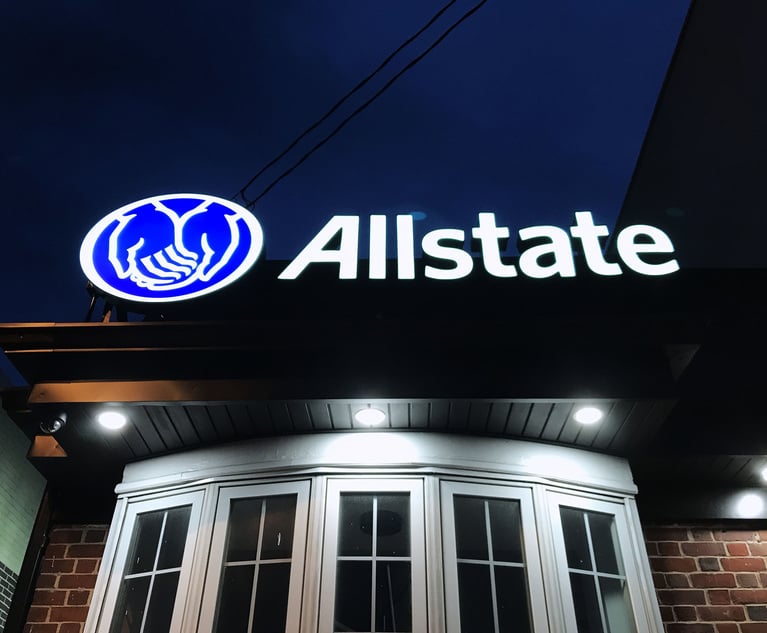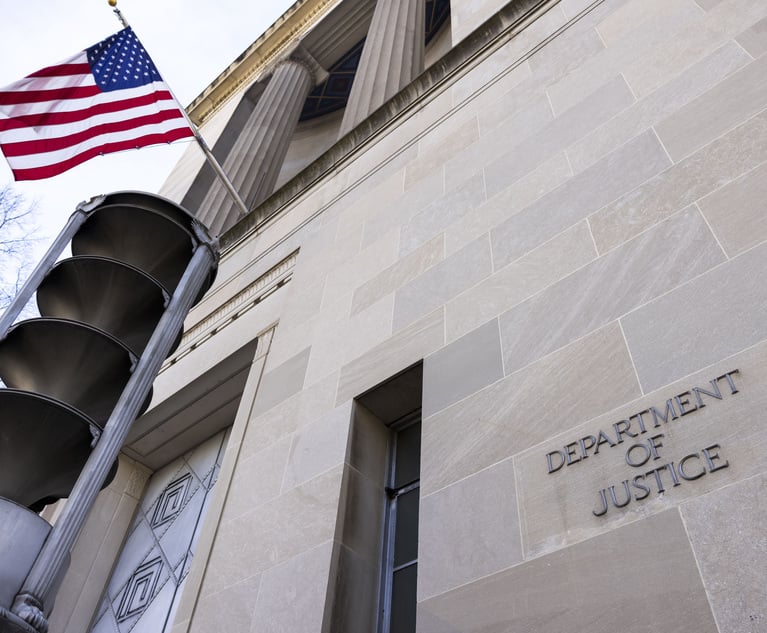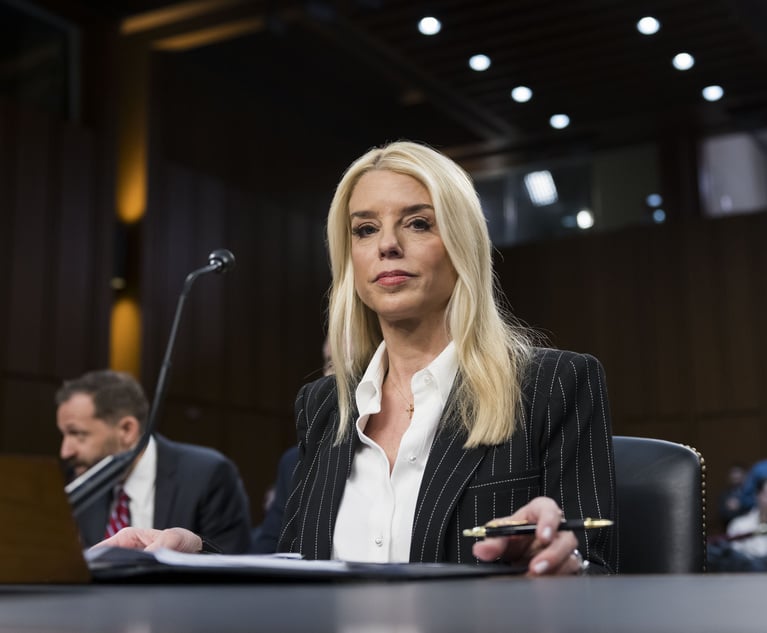Here Come the Lawyers: A Look at the Key Players in the Sears' Chapter 11 Case
As Sears prepares to closed its doors after more than 120 years in business, who are the main players pulling the strings of its bankruptcy case?
October 15, 2018 at 05:58 PM
4 minute read
 Photo: Canadapanda/Shutterstock.com
Photo: Canadapanda/Shutterstock.com
When Sears, Roebuck & Co., based in Illinois and established in 1893, filed for bankruptcy in New York Monday, it set in motion a chain of lawyers, litigation and paperwork.
Sears' debt had been escalating for years, but the nail in its coffin was an impossible $134 million payment due on Oct. 15.
As day one of the retail giant's bankruptcy proceedings comes to a close, we take a look at the key players behind the case.
Read Sears' bankruptcy petition
Stephen Sitley is general counsel to Sears, which has retained Jacqueline Marcus, a partner at Weil, Gotshal & Manges in New York, to guide the company through its bankruptcy litigation.
Marcus' background includes a lead role representing Lehman Brothers Holdings Inc., and a history of representing a host of big brand names, including retail store Aéropostale Inc. in bankruptcy proceedings. Her restructuring efforts with Aéropostale won her the “Turnaround of the Year: Mega Company” prize in September 2017, awarded by the Turnaround Management Association.
Another player: Adam M. Adler of Morgan, Lewis & Bockius in Washington, D.C., counsel to claims and noticing agent Prime Clerk LLC, which serves as a coordinator between Sears and the bankruptcy professionals involved in the case, gathering and analyzing information about assets, liabilities and other financial affairs.
New York firm Wachtell, Lipton, Rosen & Katz is expected to serve as adviser to Eddie Lampert, the former owner of Sears. Lampert stepped down immediately after the bankruptcy was announced.
Former Skadden, Arps, Slate, Meagher & Flom lawyer and restructuring expert Alan J. Carr joined Sears just one week ago and will serve as an adviser on the company's board of directors during the bankruptcy.
Sears hinted at its action plan in a press release, stating that it “expects to move through the restructuring process as expeditiously as possible.” According to the statement, Sears has already begun to negotiate with its major stakeholders.
ESL Investments Inc., Lampert's hedge fund, is currently holding talks to discuss options, one of which is to provide a $300 million junior bankruptcy loan, which would serve as a cash injection to keep bankruptcy proceedings afloat. The loan would be paid back after all obligations to senior lenders or creditors have been met.
Another option for ESL would be to make a stalking-horse offer, where it would back Sears' assets ahead of an auction, avoiding the hazard of low bids.
 James D. Silver, a partner with Kelley Kronenberg in Fort Lauderdale. Courtesy photo.
James D. Silver, a partner with Kelley Kronenberg in Fort Lauderdale. Courtesy photo.“Everyone's going to be in a mad scramble to protect their own interests as much as they can, but at the same time give up what they can give up,” said Fort Lauderdale attorney James D. Silver of Kelley Kronenberg who's worked in the bankruptcy realm for more than 30 years.
For Silver, who is not involved in the Sears case, the burning question is whether Lampert and his companies would be the only one offering a loan or if outside banks would join the fray, “which tends to at least be better from an appearance point of view.”
According to Silver, people tend to be “very suspect” when it comes to insiders such as Lampert taking the helm in bankruptcy proceedings, over fears he might be “trying to improve his position at their expense.”
The “tension,” Silver said, is that “without Lampert coming in and infusing new money, this may become an impossible situation and get worse.”
“Anything's possible in a Chapter 11 bankruptcy, and a lot of it depends on what kind of plan they're able to formulate and what kind of creditor support they're able to marshal for that plan,” Silver said. ”There's going to be a lot of give-and-take.”
This content has been archived. It is available through our partners, LexisNexis® and Bloomberg Law.
To view this content, please continue to their sites.
Not a Lexis Subscriber?
Subscribe Now
Not a Bloomberg Law Subscriber?
Subscribe Now
NOT FOR REPRINT
© 2025 ALM Global, LLC, All Rights Reserved. Request academic re-use from www.copyright.com. All other uses, submit a request to [email protected]. For more information visit Asset & Logo Licensing.
You Might Like
View All
Vedder Price Shareholder Javier Lopez Appointed to Miami Planning, Zoning & Appeals Board
2 minute read

Crypto Entrepreneur Claims Justice Department’s Software Crackdown Violates US Constitution
4 minute readTrending Stories
- 1Contract Technology Provider LegalOn Launches AI-powered Playbook Tool
- 2Court of Appeals Provides Comfort to Land Use Litigants Through the Relation Back Doctrine
- 3Amid the Tragedy of the L.A. Fires, a Lesson on the Value of Good Neighbors
- 4Democracy in Focus: New York State Court of Appeals Year in Review
- 5In Vape Case, A Debate Over Forum Shopping
Who Got The Work
J. Brugh Lower of Gibbons has entered an appearance for industrial equipment supplier Devco Corporation in a pending trademark infringement lawsuit. The suit, accusing the defendant of selling knock-off Graco products, was filed Dec. 18 in New Jersey District Court by Rivkin Radler on behalf of Graco Inc. and Graco Minnesota. The case, assigned to U.S. District Judge Zahid N. Quraishi, is 3:24-cv-11294, Graco Inc. et al v. Devco Corporation.
Who Got The Work
Rebecca Maller-Stein and Kent A. Yalowitz of Arnold & Porter Kaye Scholer have entered their appearances for Hanaco Venture Capital and its executives, Lior Prosor and David Frankel, in a pending securities lawsuit. The action, filed on Dec. 24 in New York Southern District Court by Zell, Aron & Co. on behalf of Goldeneye Advisors, accuses the defendants of negligently and fraudulently managing the plaintiff's $1 million investment. The case, assigned to U.S. District Judge Vernon S. Broderick, is 1:24-cv-09918, Goldeneye Advisors, LLC v. Hanaco Venture Capital, Ltd. et al.
Who Got The Work
Attorneys from A&O Shearman has stepped in as defense counsel for Toronto-Dominion Bank and other defendants in a pending securities class action. The suit, filed Dec. 11 in New York Southern District Court by Bleichmar Fonti & Auld, accuses the defendants of concealing the bank's 'pervasive' deficiencies in regards to its compliance with the Bank Secrecy Act and the quality of its anti-money laundering controls. The case, assigned to U.S. District Judge Arun Subramanian, is 1:24-cv-09445, Gonzalez v. The Toronto-Dominion Bank et al.
Who Got The Work
Crown Castle International, a Pennsylvania company providing shared communications infrastructure, has turned to Luke D. Wolf of Gordon Rees Scully Mansukhani to fend off a pending breach-of-contract lawsuit. The court action, filed Nov. 25 in Michigan Eastern District Court by Hooper Hathaway PC on behalf of The Town Residences LLC, accuses Crown Castle of failing to transfer approximately $30,000 in utility payments from T-Mobile in breach of a roof-top lease and assignment agreement. The case, assigned to U.S. District Judge Susan K. Declercq, is 2:24-cv-13131, The Town Residences LLC v. T-Mobile US, Inc. et al.
Who Got The Work
Wilfred P. Coronato and Daniel M. Schwartz of McCarter & English have stepped in as defense counsel to Electrolux Home Products Inc. in a pending product liability lawsuit. The court action, filed Nov. 26 in New York Eastern District Court by Poulos Lopiccolo PC and Nagel Rice LLP on behalf of David Stern, alleges that the defendant's refrigerators’ drawers and shelving repeatedly break and fall apart within months after purchase. The case, assigned to U.S. District Judge Joan M. Azrack, is 2:24-cv-08204, Stern v. Electrolux Home Products, Inc.
Featured Firms
Law Offices of Gary Martin Hays & Associates, P.C.
(470) 294-1674
Law Offices of Mark E. Salomone
(857) 444-6468
Smith & Hassler
(713) 739-1250







